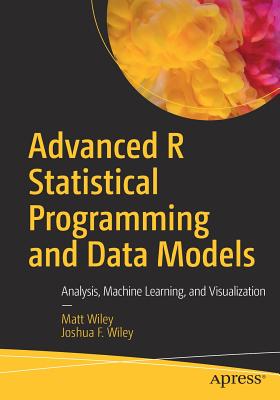Model to Meaning: How to Interpret Statistical Models with R and Python
暫譯: 模型與意義:如何使用 R 和 Python 解讀統計模型
Arel-Bundock, Vincent
商品描述
Our world is complex. To make sense of it, data analysts routinely fit sophisticated statistical or machine learning models. Interpreting the results produced by such models can be challenging, and researchers often struggle to communicate their findings to colleagues and stakeholders. Model to Meaning is a book designed to bridge that gap. It is a practical guide for anyone who needs to translate model outputs into accurate insights that are accessible to a wide audience.
Features:
- Presents a simple and powerful conceptual framework to interpret the results from a wide variety of statistical or machine learning models.
- Features in-depth case studies covering topics such as causal inference, experiments, interactions, categorical variables, multilevel regression, weighting, and machine learning.
- Includes extensive practical examples in both R and Python using the marginal effects software.
- Accompanied by comprehensive online documentation, tutorials, and bonus case studies.
Model to Meaning introduces a simple and powerful conceptual framework to help analysts describe the statistical quantities that can shed light on their research questions, estimate those quantities, and communicate the results clearly and rigorously. Based on this framework, the book proposes a consistent workflow that can be applied to (almost) any statistical or machine learning model. Readers will learn how to transform complex parameter estimates into quantities that are readily interpretable, intuitive, and understandable.
Written for data scientists, researchers, and students, the book speaks to newcomers seeking practical skills, and to experienced analysts who are ready to adopt new tools and rethink entrenched habits. It offers useful ideas, concrete workflows, powerful software, and detailed case studies, presented using real-world data and code examples.
商品描述(中文翻譯)
我們的世界是複雜的。為了理解這個世界,數據分析師經常使用複雜的統計或機器學習模型。解釋這些模型產生的結果可能是具有挑戰性的,研究人員常常難以將他們的發現傳達給同事和利益相關者。《Model to Meaning》是一本旨在填補這一空白的書籍。它是一本實用指南,適合任何需要將模型輸出轉化為可供廣泛受眾理解的準確見解的人。
特點:
- 提供一個簡單而強大的概念框架,以解釋各種統計或機器學習模型的結果。
- 包含深入的案例研究,涵蓋因果推斷、實驗、交互作用、類別變數、多層次回歸、加權和機器學習等主題。
- 包括使用邊際效應軟體的 R 和 Python 的廣泛實用範例。
- 附有全面的在線文檔、教程和額外的案例研究。
《Model to Meaning》介紹了一個簡單而強大的概念框架,幫助分析師描述能夠闡明其研究問題的統計量,估計這些量,並清晰而嚴謹地傳達結果。基於這一框架,本書提出了一個一致的工作流程,可以應用於(幾乎)任何統計或機器學習模型。讀者將學會如何將複雜的參數估計轉化為易於解釋、直觀且可理解的量。
本書為數據科學家、研究人員和學生而寫,適合尋求實用技能的新手,以及準備採用新工具並重新思考根深蒂固習慣的經驗豐富的分析師。它提供了有用的想法、具體的工作流程、強大的軟體和詳細的案例研究,並使用真實世界的數據和代碼範例進行呈現。
作者簡介
Vincent Arel-Bundock is Professor at the Université de Montréal, where he teaches political economy and research methods. His research focuses on making the interpretation of statistical models more rigorous and accessible. Vincent is the creator of the widely-used marginaleffects software package, available for both R and Python.
作者簡介(中文翻譯)
Vincent Arel-Bundock 是蒙特利爾大學的教授,教授政治經濟學和研究方法。他的研究專注於使統計模型的解釋更加嚴謹和易於理解。Vincent 是廣泛使用的 marginaleffects 軟體包的創建者,該軟體包可用於 R 和 Python。











